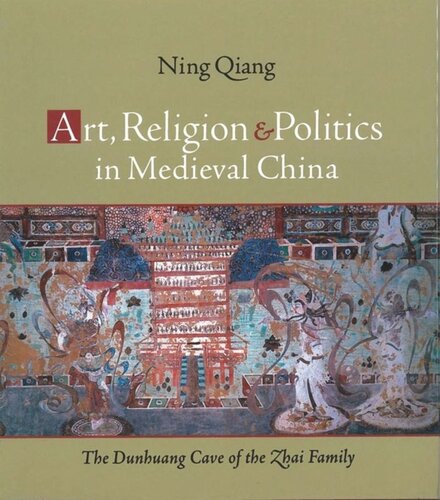

Most ebook files are in PDF format, so you can easily read them using various software such as Foxit Reader or directly on the Google Chrome browser.
Some ebook files are released by publishers in other formats such as .awz, .mobi, .epub, .fb2, etc. You may need to install specific software to read these formats on mobile/PC, such as Calibre.
Please read the tutorial at this link: https://ebookbell.com/faq
We offer FREE conversion to the popular formats you request; however, this may take some time. Therefore, right after payment, please email us, and we will try to provide the service as quickly as possible.
For some exceptional file formats or broken links (if any), please refrain from opening any disputes. Instead, email us first, and we will try to assist within a maximum of 6 hours.
EbookBell Team

5.0
40 reviewsThe cave-temple complex popularly known as the Dunhuang caves is the world’s largest extant repository of Tang Buddhist art. Among the best preserved of the Dunhuang caves is the Zhai Family Cave, built in 642. It is this remarkable cave-temple that forms the focus of Ning Qiang’s cross-disciplinary exploration of the interrelationship of art, religion, and politics during the Tang. The author combines, in his careful examination of the paintings and sculptures found there, the historical study of pictures with the pictorial study of history. By employing this two-fold approach, he is able to refer to textual evidence in interpreting the formal features of the cave temple paintings and to employ visual details to fill in the historical gaps inevitably left by text-oriented scholars. The result is a comprehensive analysis of the visual culture of the period and a vivid description of social life in medieval China.
The original Zhai Family Cave pictures were painted over in the tenth century and remained hidden until the early 1940s. Once exposed, the early artwork appeared fresh and colorful in comparison with other Tang paintings at Dunhuang. The relatively fine condition of the Zhai Family Cave is crucial to our understanding of the original pictorial program found there and offers a unique opportunity to investigate the visual details of the original paintings and sculptures in the cave. At the same time, the remaining traces of reconstruction and redecoration provide a new perspective on how, for over three centuries, a wealthy Chinese clan used its familial cave as a political showcase.